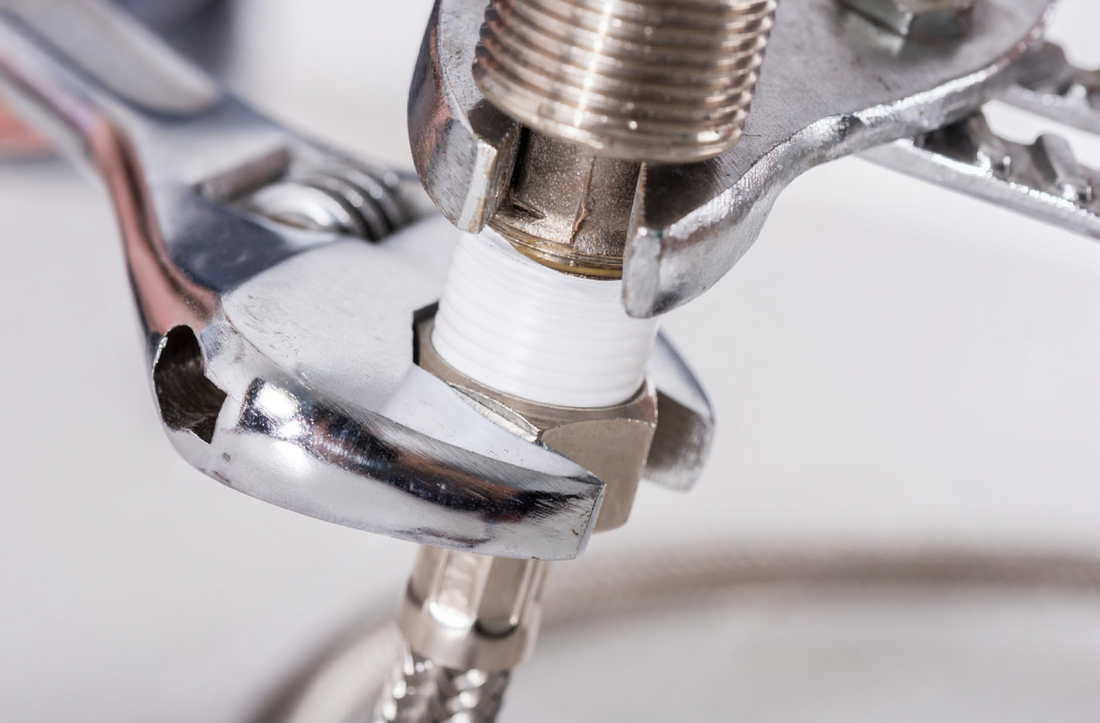
5 Most Common Pipe Thread Types Explained
Share
Pipe threads help make the pipeline connection safe. However, carrying gas or water in the pipeline for a prolonged period of time might lead to an increase in pressure, which results in the development of leakage issues. This happens if the correct pipe thread is not used to connect the pipelines, which naturally increases the pressure of gas or water and develops leaks in the joints.
As a solution to this problem, there are different types of pipe threads available in the market. Professionals installing the pipes must know that the same situation will not call for both a tapered pipe thread and a straight pipe thread. It depends on the type of pipe connection and the pressure the pipe joints have to face. So, a detailed knowledge of the different types of pipe threads is necessary.
But before we get into the discussion of the 5 most common pipe thread types, let’s start the discussion by understanding the importance of the types of threads on pipe.
What is a Pipe Thread (And Why It Matters)?
It is a helical groove that uses a male pipe thread and a female one to create a pressure-tight connection between two pipes. It helps to securely connect a pipe with another component.
Mainly, there are two types of pipe thread - tapered and straight.
The tapered pipe thread is the one that has a decreasing diameter. On the other hand, a straight pipe thread has the diameter of same diameter.
In general, tapered threads inherently create a strong sealant. A Teflon tape or other sealant can be used to make the seal more secure. On the other hand, a straight pipe thread uses a gasket or an O-ring to secure the connection. If you use the wrong sealant in the joints, it might not be as strong a connection as it should be.
Now, let’s look at some common pipe threads that are used in US plumbing.
|
Quick Comparison of 5 Common Pipe Thread Types (U.S. Plumbing) |
|||||
|
Thread Type |
NPT (National Pipe Thread) |
Compression |
Flare |
BSP (British Standard Pipe) |
GHT (Garden Hose Thread) |
|
Tapered or Straight |
Tapered |
Straight |
Straight (with flare) |
Tapered or Straight |
Straight |
|
Typical Use Case |
Gas, water, HVAC systems |
Faucets, angle stops, shutoff valves |
Refrigeration, propane, A/C lines |
Imported parts, irrigation, parts from UK/EU |
Outdoor spigots, hoses |
|
Sealing Method |
Teflon tape / pipe dope |
Mechanical (ferrule) |
Metal-to-metal seal |
Depends on type |
Gasket washer |
|
Common in the U.S.? |
✅ Yes |
✅ Yes |
✅ Yes |
⚠️ Sometimes |
✅ Yes |
Table: Comparison of Pipe Thread Types
The Different Types of Pipe Threads
The table above must have given you an overview. Let’s discuss the pipe threads in a bit
more detail, one by one. You will also get to know how to use the pipe threaders.
1. NPT (National Pipe Thread) – America’s Standard
It is a tapered thread that is most commonly used in the households of the USA. You will see that this type of thread is self-sealing at low pressure. However, under high pressure, it might develop leaks in the joint.
So, to be on the safer side, you will need to use additional sealant. For example, use Teflon tape or pipe dope while the sealing is done. It will hold the joint intact even under high pressure.
Commonly, this is a type of pipe threading that is used in the water supply, gas lines, HVAC systems, and sprinklers. But be cautious not to keep the seal too tight or leave it in a fluctuating temperature.
2. Compression Threads – For Fixtures and Stops
The name of this fitting has come from the thread compressing the inner tube inserted into it. A compression thread is a common type of sealing that homeowners may have seen in their houses as well. For example, the sealing under the sink, which uses an angle stop, is a compression.
In the compression thread, an outer nut is used along with an inner ferrule or a compression ring.
This straight pipe threading requires more compression in order to be secured under pressure. It is also one of the most commonly used threads. Besides its use under the sink, you will see it being used in refrigerator ice makers, shut-off ice makers, etc.
Unlike the NPT, you do not need Teflon tape or other sealants.
3. Flare Threads – High-Pressure, Leak-Proof Seal
If you want to know if any of the types of pipe threads have a unique design, then this is the one you have been looking for. The fittings for the flare sealings have a flared nut with a flared end.
A flared nut is used at the end of a tube by creating an expansion at the end of a tube. It uses a special pipe threading tool to expand the tube at 37 degrees when in an inverted position.
This type of pipe thread is used in systems that create high pressure. It is also useful in resisting vibration in the line.
4. BSP (British Standard Pipe) – Beware the Look-Alike
BSP is generally used in the international measurement of pipes and connections. Similar to its American counterpart, BSP can also be of two types - Parallel (BSPP) and Tapered (BSPT).
However, there is a fine difference in its shape and size. BSPT has an angle of 55 degrees, but on the other hand, the American version is 60 degrees. Even if both the tapered versions look alike, using the BSP's part with the American one might leave a small leakage. When pressure increases, the leak might damage the pipeline connection.
The most common use of BSP is in the imported equipment of irrigation or in other equipment.
5. GHT (Garden Hose Thread) – Outdoor Standard
This is a type of thread on a pipe that is straight, compared to the type of threads used in the NPT (tapered). This is used in garden hoses and other similar accessories in the USA.
The Garden Hose Thread is designed to be tightened by hand. On the other hand, the NPT is designed to be tightened by pipe threading tools. When you are using the GHT, make sure the washer is in the right form. Otherwise, it will create a leakage in the system.
Common Mistakes to Avoid
You should watch out for some common mistakes, such as:
- Mixing BSP with NPT
- Using Teflon in place of compression
- Overtightening the threads
To avoid mistakes, you need to know the different types of threads to be able to differentiate them categorically.
Conclusion: Right Thread, Right Fit, Leak-Free
When installing a pipe thread, it is crucial to understand the type and its characteristics. Also, know some common types that are generally used in US households. It will help you ensure the safety of the pipeline’s connection and maintain a seamless flow of gas, water, or other material.
As a professional, it is imperative that you purchase the right kind of sealant or thread before installation. For that, check out our website and see if you get any tools matching your requirements.
Frequently Asked Questions
How to Identify the Male and Female Garden Hose Nuts?
The male fittings have threads on the outer side, and the female fittings have threads inside of it. The male fittings get fitted onto the female fittings.
Are Quick Connectors Helpful for Connecting Garden Hoses?
Yes! But before you do so, check if the quick connectors are compatible with your garden hose.
Is an O-ring Compatible With an NPT?
No, an O-ring is not compatible with NPT. As it is partially screwed in, you can use a Teflon tape or liquid sealant with it.
Can I Use a Male and Male Fitting to Create a Secure Seal in a Pipeline?
No, a male and male fitting is not compatible. You have to use a male and female fitting for a secure connection.
